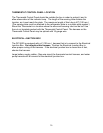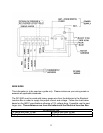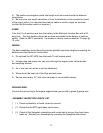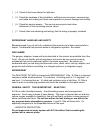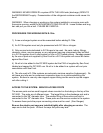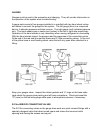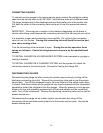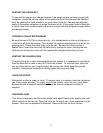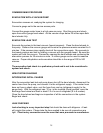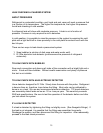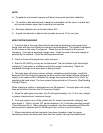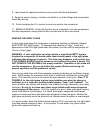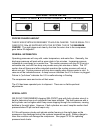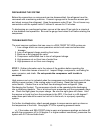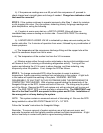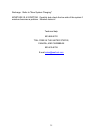28
COMMISSIONING PROCEDURE
EVACUATION WITH A VACUUM PUMP
Evacuation removes air, readying the system for charging.
Connect a gauge set to the service access ports.
Connect the gauge center hose to a high vacuum pump. Start the pump and slowly
open the suction gauge hand wheel. As the vacuum drops below 20 inches open both
hand wheels fully.
EVACUATION LEAK TEST
Evacuate the system to the best vacuum (lowest pressure). Close the hand wheels to
the pump. Observe the vacuum gauge and be sure the pressure remains constant for 5
minutes. If the pressure rises rapidly check all the connections again. Re-evacuate to
the lowest pressure and test by holding a vacuum with the gauges closed. Be sure the
system will hold this vacuum. Proceed by opening the hand wheels and continuing the
evacuation process for 30 minutes or more. A micron gauge can be used to measure
vacuum. Proper dehydration and evacuation should be in the range of 200 to 500
microns.
The evacuation leak check is a preliminary check and is not to be considered a
system leak check.
NEW SYSTEM CHARGING
INTRODUCING INITIAL CHARGE
After the evacuation leak test and pump down shut off the hand wheels, disconnect the
center hose from the pump, and connect it to the refrigerant supply. If the center hose
does not have a check valve, vent the hose from can tap (refrigerant supply) to the
gauge body. With the refrigerant can (12 oz. in the inverted (liquid) position, open the
discharge hand wheel and feed in about 1/2 of a can of refrigerant (6 to 8 ounces).
Close the hand wheel and begin an inspection of all the connections in the system.
Begin leak check.
LEAK CHECKING
Leak checking is a very important step that should be done with diligence. A leak
will cripple this system. Please take the time needed to be sure all connections are
tight. Check every connection even the ones that were pre-made in manufacture.



